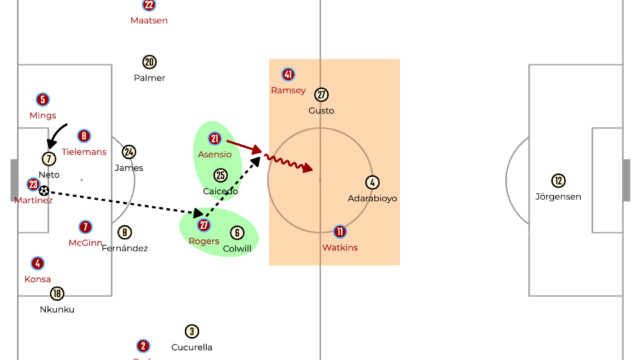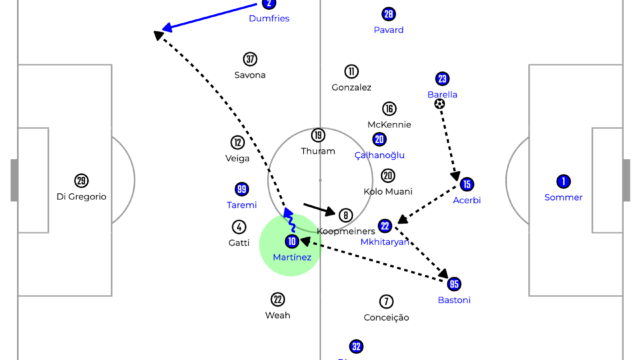The Impact of Narrow Attackers in Pressing [Juventus v Roma 22-23 Round 3]

Introduction
Throughout the game, Juventus were tactically better than Roma especially in building the attack and pressing. However, Roma could score from set piece and the points were shared between two sides. Interestingly, both teams pressed with similar structure even though the systems were different. The common feature was pressing with narrow attackers. Both Juve’s wingers and Roma’s attacking midfielders kept staying narrow and high when pressing but the hosts could press well but the others were not. Therefore, in this article, the advantages and disadvantage of narrow attackers pressing are going to be analysed.
Advantages of Narrow Attackers
Firstly, how Juventus, who could maximise the advantage of pressing with narrow wingers, applied pressure is going to be discussed. As it was mentioned, both wingers tucked in and stayed high to press the opposition side centre backs. Additionally, Miretti who was the left attacking midfielder stepped up parallel to Vlahović and Juve formed 4-4-2 when pressing.

As the winger applying pressure to the opposition side centre back, the space behind him was uncovered and there was the wingback of Roma. Therefore, at the same time, the defenders shuffle across to the ball side to cover the space and mark the opposition spare players. This can be a risk because the opposition team can play in behind through the gap between defenders, which was stretched by shuffling over. Actually, Roma’s left wingback Spinazzola received the ball deeper to drag De Sciglio out and played through balls with Abraham or pellegrini running in behind. However, Juve’s centre backs could deal with this situation, so it is possible to say that this risk was managed well.
By taking this risk, Juventus wanted to play counterattacks with more numbers and scored the second goal in 24 minutes, which was disallowed unfortunately.

The counterattack happened from winning the ball when Dybala received the ball. As it was mentioned, the centre back Danilo jumped to press him to cover the space behind Kostić who stayed narrow and high. The ball went to Vlahović’s feet and the counterattack began. As soon as the ball regained, both wingers were already high enough to run past the opposition wingbacks or defensive midfielders and sprinted to join the counterattack. Therefore, the counterattack was played with four attackers against three defenders of Roma. This is one of the advantages of pressing with wingers narrow and high. However, what is the disadvantage of this type of pressing except for the necessity for defenders to shuffle across, which stretches the gap between them? Let’s analyse how Roma failed to press with narrow and high wingers.
Disadvantages of Narrow Attackers
Roma was playing with a 3-4-3 and changed into a 5-2-3 out of possession. In this case, both attacking midfielders who formed the first line, stayed high and tucked in when pressing. However, three players in front couldn’t deal with the opposition four or five players at the back because they didn’t work together. In detail, if someone pressed to one of the centre backs with cutting the passing lane to the defensive midfielder, other two players should mark the opposition players around him or cut other passing lane from the centre back but what they were doing was just standing still and didn’t work as a unit.

Therefore, the space behind the attacking midfielders were open and Cuadrado or Miretti often dropped to these spaces to receive the ball a lot. Juve managed these situations by having defenders to jump to press but Roma’s defenders hardly stepped up to mark Cuadrado or Miretti. Thus, it became the job for two defensive midfielders to shuffle across to mark them but the gap between them was increased and easily exploited by Juve’s attackers. If the attackers of the hosts could drive little bit more to drag the defenders out or make something to break the connection between defenders, Juve could’ve scored more but the final third attacking of Juve was poor and they couldn’t maximise the advantage. This is the reason why they only delivered simple crosses and failed to score the winner.
Overall, Juventus pressed really well with wingers narrow and high and played some great counterattacks while Roma couldn’t do it even though Mourinho changed the system to 4-2-3-1 in the second half. This is because it was not the problem of the system but how to work together. Thanks for reading.


